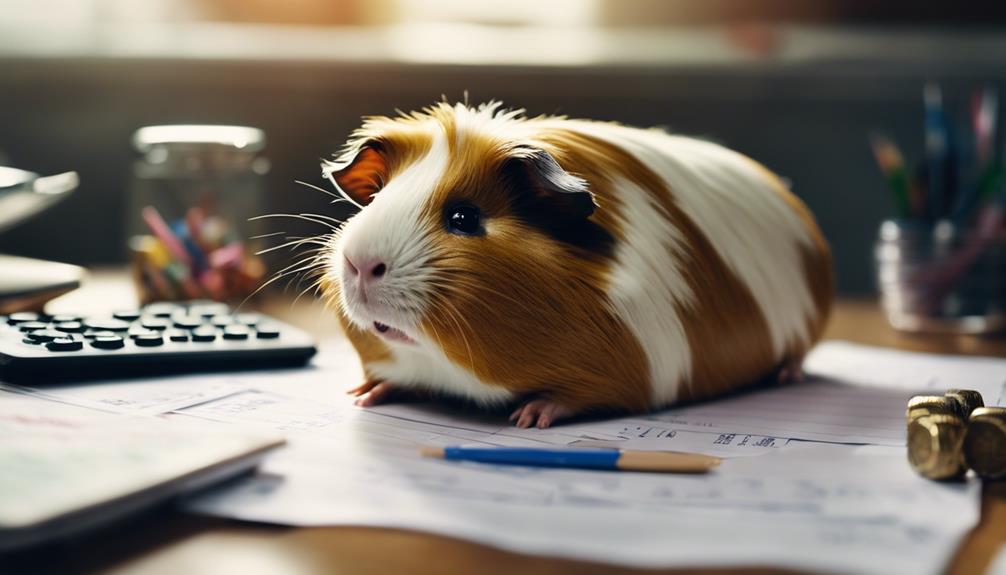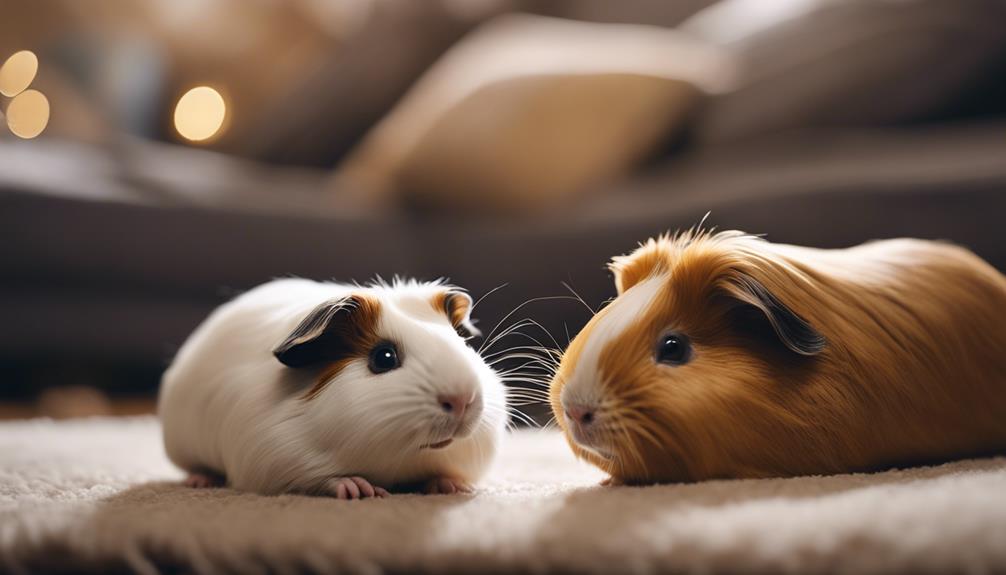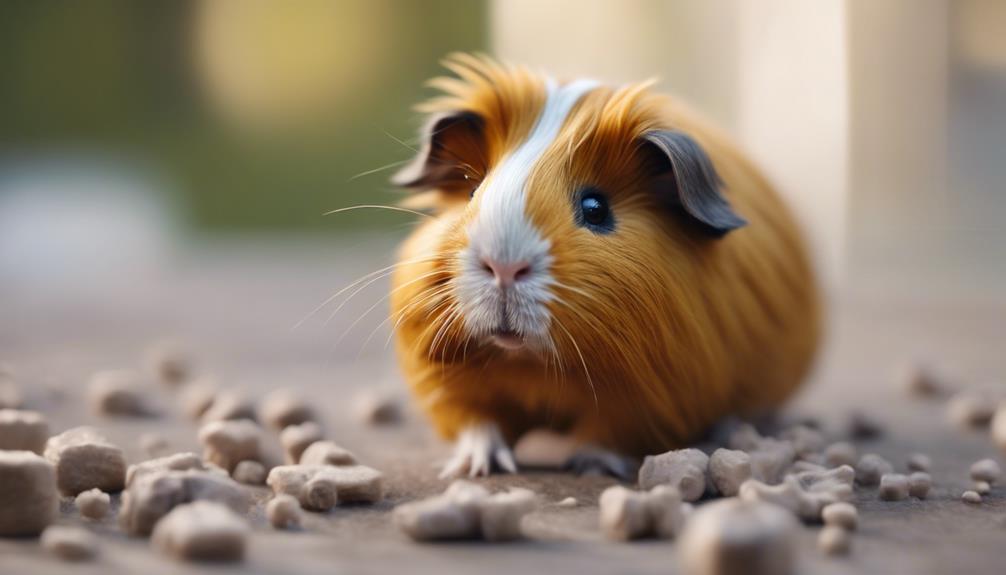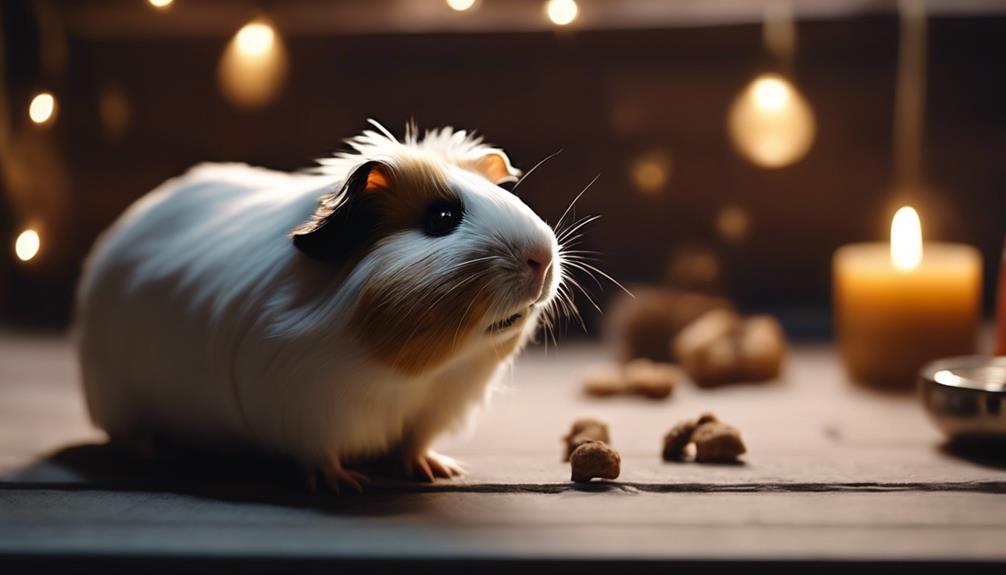When Is the Best Time to Adopt a Himalayan Guinea Pig?

When considering adopting a Himalayan guinea pig, it is important to take into account their specific needs. These small creatures require a dedicated owner who can provide proper care, including a spacious cage, fresh food, and regular grooming. Additionally, it is crucial to allocate time for preparation before bringing a Himalayan guinea pig home to ensure a harmonious companionship. Taking the time to research their care requirements and set up a suitable living environment will help create a happy and healthy bond between you and your new pet.
It is recommended to adopt a Himalayan guinea pig when you have the necessary resources and commitment to meet their needs consistently. By preparing in advance and understanding the responsibilities involved in caring for a Himalayan guinea pig, you can establish a strong foundation for a fulfilling relationship with your new furry friend.
Consider Your Lifestyle and Schedule
When considering adopting a Himalayan guinea pig, it's essential to assess your lifestyle and schedule to ensure you can meet their daily care and interaction needs. Guinea pigs are social animals that require regular attention, playtime, and grooming. It's crucial to evaluate whether your schedule allows for these daily interactions with your pet guinea pig. Adopting a Himalayan guinea pig means committing to providing them with a stable and pet-friendly environment where they can thrive.
Guinea pigs thrive on routine, so it's important to consider if your lifestyle can accommodate their needs for consistency and regularity. Daily feeding, cleaning, and social interaction are essential for the well-being of your pet guinea pig. Additionally, scheduling regular veterinary check-ups and grooming sessions is vital to ensure their health and happiness. Before bringing a Himalayan guinea pig into your home, make sure you can dedicate the time and effort needed to meet their specific care requirements.
Evaluate Your Financial Readiness

Considering the essential care requirements for a Himalayan guinea pig, assessing your financial readiness is paramount to ensure their well-being and health. When adopting a guinea pig, it's crucial to evaluate your financial preparedness to provide the best care possible.
Here are four key points to consider:
- Ongoing Expenses: Guinea pigs require a consistent supply of food, bedding, and potential veterinary care. Ensure your budget can accommodate these recurring costs.
- Initial Setup Costs: The initial setup for a Himalayan guinea pig includes purchasing a cage, accessories, and initial supplies. Make sure you can afford these upfront expenses.
- Emergency Veterinary Care: Plan for unexpected veterinary costs that may arise during your guinea pig's lifetime. Having a financial safety net for emergencies is vital.
- Grooming Needs: Budget for grooming supplies and potential grooming services, especially for Himalayan guinea pigs with long fur. Regular grooming is essential for their well-being.
Assess Your Commitment and Time Availability

Assessing your dedication and availability of time is crucial when considering adopting a Himalayan guinea pig for optimal care and companionship. Guinea pigs need daily interaction and playtime to thrive, so it's essential to evaluate if you can commit to meeting these needs.
Adoptable guinea pigs require a significant time investment for feeding, cage cleaning, socialization, and overall care. Before bringing a guinea pig into your home, ensure that you have the time to dedicate to building a bond with your new pet.
Caring for a guinea pig takes time and effort, as they rely on their owners for companionship and enrichment. Assessing your commitment to providing a loving and responsible environment for your adoptable guinea pig is key to ensuring a fulfilling relationship for both you and your furry companion.
Think About Your Existing Pets

Evaluate your current pets' temperament and compatibility with a new Himalayan guinea pig to ensure a harmonious introduction. When thinking about introducing a Himalayan guinea pig to your existing pets, here are some key points to consider:
- Temperament: Consider the personality traits of your current pets. Are they generally calm and sociable, or do they have a history of aggression towards other animals?
- Compatibility: Think about whether your existing pets have previously interacted with guinea pigs or animals of similar size. This can give you an idea of how they might react to a new guinea pig.
- Introduction: Introduce the Himalayan guinea pig gradually to your other pets. Allow them to get used to each other's scents before any face-to-face interactions.
- Monitoring: Keep a close eye on the interactions between your existing pets and the new guinea pig. Look for signs of stress or aggression, and be prepared to separate them if necessary.
Research the Best Age for Adoption

When determining the best age for adopting a Himalayan guinea pig, consider the adaptability and needs of the specific age group. Baby Himalayan guinea pigs are typically more active and require additional attention and socialization to thrive in their new environment. On the other hand, adult Himalayan guinea pigs have established personalities, making it easier to match them with your lifestyle. It is advisable to adopt a Himalayan guinea pig that is at least 6-8 weeks old as they tend to exhibit better independence and overall health at this stage. The decision to adopt should also align with your readiness to provide a loving and stable home for your new furry companion.
| Age Group | Characteristics |
|---|---|
| Baby Himalayan guinea pigs | More active, require additional attention and socialization for adjustment. |
| Adult Himalayan guinea pigs | Established personalities, easier to match with your lifestyle. |
Plan for Proper Housing and Supplies

To properly accommodate a Himalayan guinea pig, ensure your cage is spacious and equipped with suitable accessories like hideouts and toys. When planning for proper housing and supplies, consider the following essential items for your furry friend:
- Spacious Cage: Guinea pigs need ample space to move around and explore. A cage with multiple levels or a large floor area is ideal for their well-being.
- Dietary Needs: Provide a balanced diet consisting of fresh hay, pellets, and a variety of vegetables to meet your Himalayan guinea pig's nutritional requirements.
- Water Bottle: Keep a water bottle or water dispenser filled with fresh water at all times to ensure your guinea pig stays hydrated.
- Comfortable Bedding: Use high-quality bedding material like fleece or paper to keep your Himalayan guinea pig cozy and comfortable in their living space.
Timing the Introduction and Bonding Period

Considering the importance of establishing a strong bond with your Himalayan guinea pig, it's essential to time the introduction and bonding period thoughtfully.
When welcoming a Himalayan guinea pig into your home, it's crucial to create a consistent routine that includes spending quality time together. Building trust takes time, so patience is key during the bonding process.
To ensure a smooth adjustment period, avoid overwhelming your new pet with too many changes or interactions initially. It's recommended to provide a stable and calm environment that promotes a positive bonding experience.
Frequently Asked Questions
What Is the Best Age to Buy a Guinea Pig?
Ironically, getting a guinea pig at a mature age can be challenging for proper socialization. However, adopting young ones around 6-8 weeks old can enhance bonding due to their adaptability. This age ensures easier handling techniques, health considerations, and meeting dietary needs efficiently.
When Can Guinea Pigs Be Adopted?
Guinea pigs can be adopted at any age. The adoption process involves considering guinea pig care, bonding with them, and ensuring their health. It's essential to assess one's availability for bonding and care before adopting.
When Should I Pick up My New Guinea Pig?
When picking up a new Himalayan guinea pig, it's essential to consider proper bonding. Introduce them slowly, adjust their environment, and monitor interactions carefully. These steps create a safe and comfortable space for your new furry friend.
When Should I Get Another Guinea Pig?
When considering adding a companion for a guinea pig, timing is crucial. The bonding process requires a thoughtful introduction, a gradual transition period, and careful socialization techniques. Ensuring compatibility through monitoring interactions closely is key.











